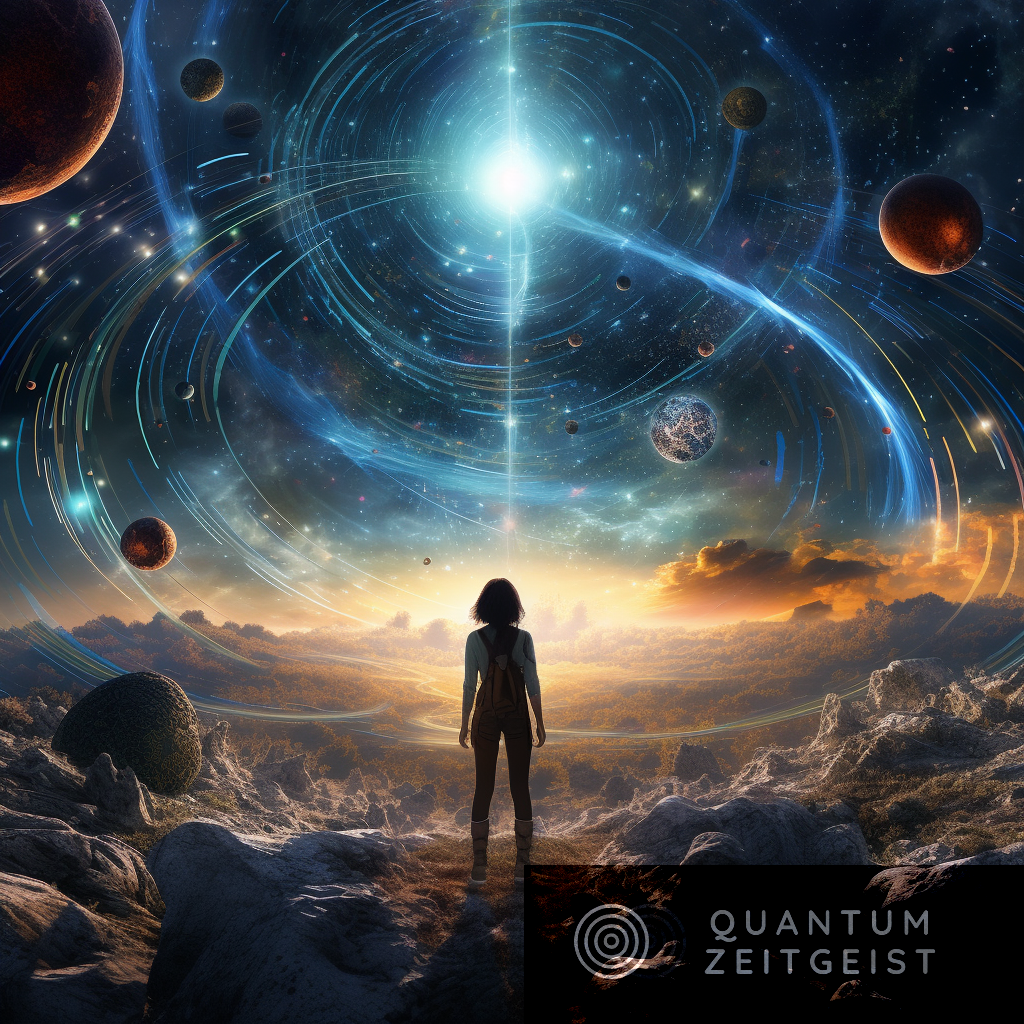The TV series titled “Mila no Multiverso” (also known as “Mila in the Multiverse”) is a 2023 production. The storyline revolves around Mila, a 15-year-old schoolgirl who lives with her mother, a scientist who spends most of her time in her laboratory. Her mother plans to give her a special present on Mila’s birthday. However, before she can do so, she is confronted by a group known as “the operators” and subsequently disappears. The series follows Mila and her friends as they quest to find her mother. You can see the series streaming on Disney+.
Table of Contents
The show touches on the multiverse concept as Mila searches for her mother across different realities. While it might not delve deeply into the scientific intricacies of physics and the multiverse, it uses the idea as a backdrop for adventure, comedy, and drama. The series is primarily in Portuguese (with availability in Spanish) but offers English subtitles, among other languages.
The multiverse is a hypothetical group of multiple universes. These universes within the multiverse are called “parallel universes”, “other universes”, or “alternative universes”. The idea is a popular topic in physics and cosmology, but it remains a debate and research subject. Shows like “Mila in the Multiverse” bring such complex concepts to a broader audience, making them more accessible and relatable through storytelling. But is the Multiverse a reality?
The real Multiverse? Mila in the Multiverse
The multiverse is a hypothetical concept that suggests the existence of multiple universes, including the one we inhabit. These universes within the multiverse are often referred to as “parallel universes”, “other universes”, or “alternative universes”. Each of these universes might have different physical properties, constants, and laws of nature. Our universe is just one of countless others, some of which might be very similar to ours, while others could be vastly different.
The term “multiverse” was coined by the American philosopher and psychologist William James in 1895, but not in the context of cosmology. Instead, he used it in a philosophical context to discuss various possible universes that are all real in some sense. It was only later in the 20th century that the term began to be used in the context of cosmology and theoretical physics.
Key Scientists Behind the Multiverses
In the 1950s, physicist Hugh Everett III proposed the “Many-Worlds Interpretation” of quantum mechanics. According to this interpretation, every quantum event causes the universe to split, leading to multiple parallel universes. Each possible outcome of a quantum event exists in its separate universe.
This interpretation suggests that every quantum event is a branch point; the universe splits into multiple paths, with each possible outcome of the quantum event realized in a separate branch or “world.” In this view, the wave function never collapses, but instead, every possible outcome of a quantum measurement occurs in some branch of the multiverse.
John Archibald Wheeler, a collaborator of Everett, was a prominent figure in theoretical physics. He introduced the term “black hole” and played a pivotal role in discussions about quantum mechanics and the nature of reality. Although he had reservations about the interpretation, Wheeler was intrigued by Everett’s MWI and helped bring attention to it.
Andrei Linde is a prominent Russian-American theoretical physicist and cosmologist best known for his work on the theory of cosmic inflation. His contributions have significantly shaped our understanding of the early universe and the possible existence of multiple universes or the “multiverse.”
In the early 1980s, Linde proposed a version of the inflationary universe called “chaotic inflation.” This theory suggests that different parts of the universe can undergo inflation at different rates, leading to “bubble universes” within a more significant inflating space. These bubbles can have other properties and physical constants, effectively existing as separate universes within a multiverse.
Linde’s model of chaotic inflation provided a mechanism by which multiple, diverse universes could be generated. The inflationary field, responsible for the rapid expansion of the universe, can take different values in different regions, leading to different physical properties in each bubble universe.
The renowned physicist Stephen Hawking also contributed to the multiverse theory, especially in the context of the wave function of the universe and the idea that the universe might not have a unique initial state.
Interest in Quantum Computing?
One of the significant side effects of this series is that it gets children thinking about physics, the multiverse and quantum-type issues. The younger that children can be introduced to these concepts, the better. That way, experiencing them or learning about them will come just that little bit easier, and of course, we hope that the terminology and topic are enough to kick start further interest. Mila in the Multiverse is a great entry point for those who see interesting concepts and get inspired to learn quantum science and associated subjects.
For those who want to learn more or take a course, we have written numerous articles on starting with quantum computing, including quantum programming and quantum computing courses.


